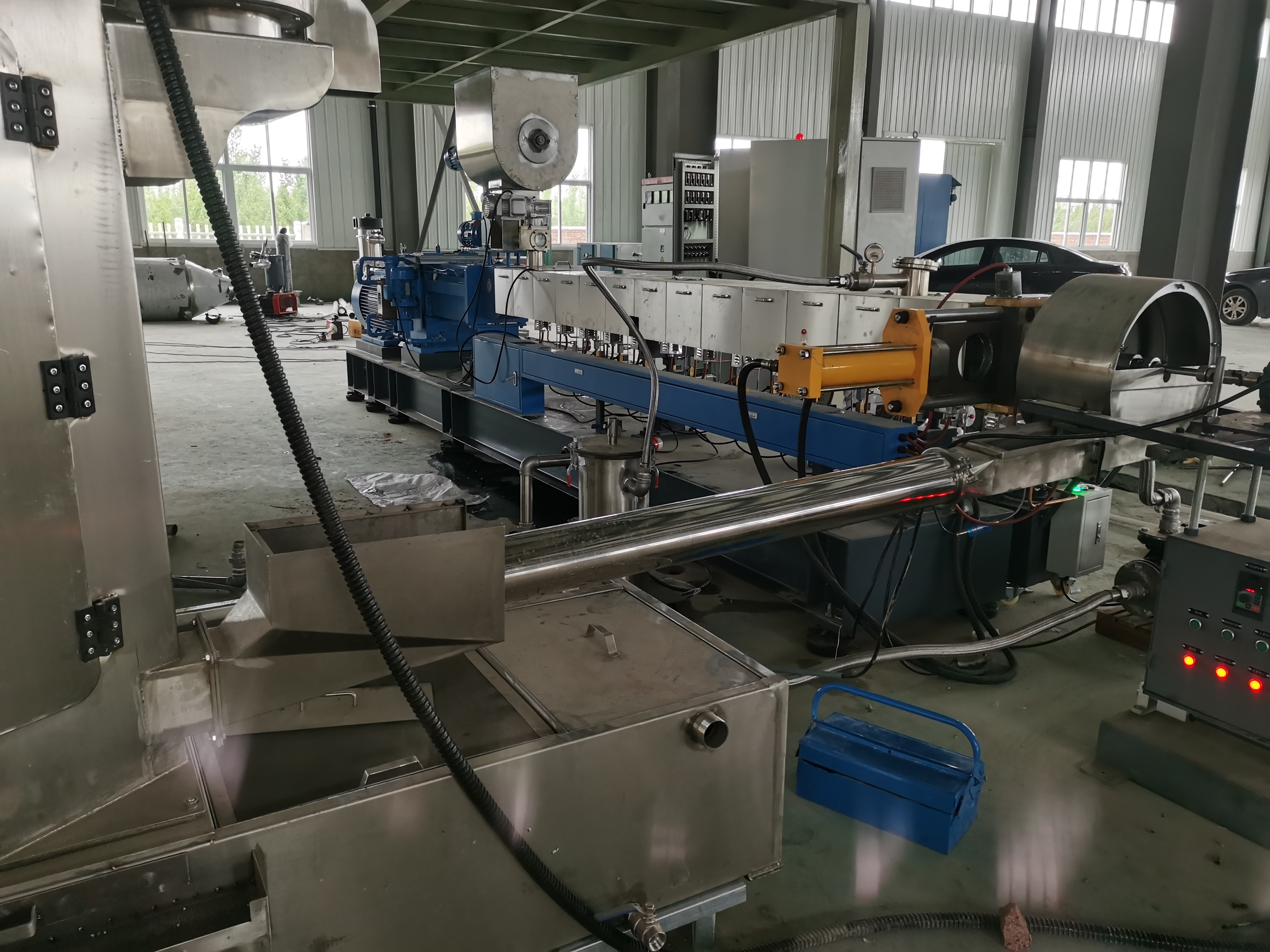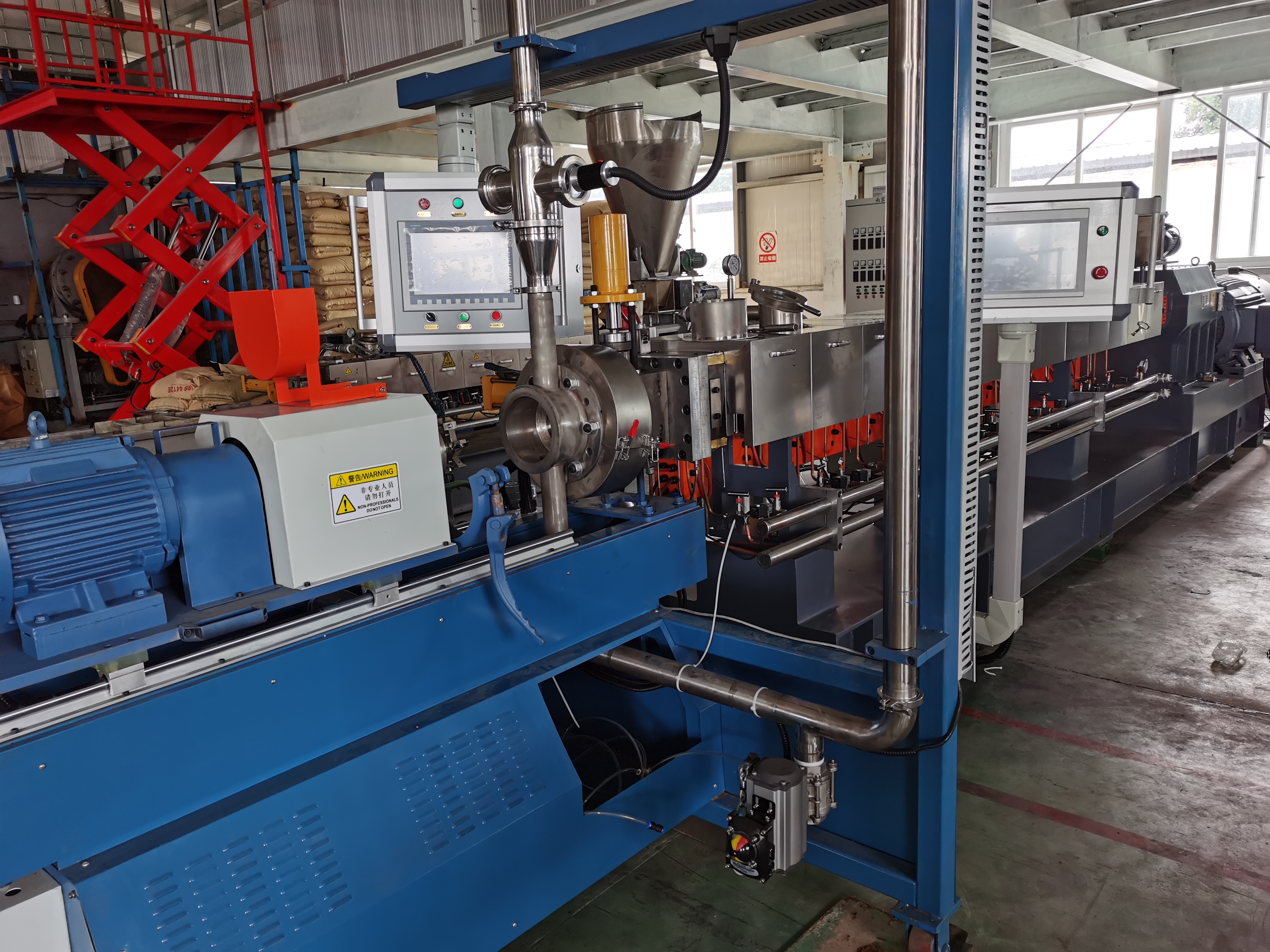
In the competitive world of polymer compounding, efficiency, consistency, and versatility are not just advantages—they are necessities. Manufacturers of color masterbatch, the concentrated pigments used to color plastics, face constant pressure to deliver perfect shades, superior dispersion, and innovative solutions. At the heart of meeting these demands lies a critical piece of equipment: the twin-screw extruder. However, for producers aiming for the highest echelons of quality and productivity, a standard machine may no longer suffice. This is where the investment in high quality two-color masterbatch machines becomes a strategic game-changer.
This comprehensive guide explores the engineering excellence, operational benefits, and long-term return on investment offered by advanced two-color masterbatch machines. It is designed for business owners, plant managers, and engineers seeking to understand how superior technology can transform their production capabilities.
A two-color masterbatch machine is a specialized twin-screw extruder engineered to produce two distinct masterbatches simultaneously in a single, integrated production line. Unlike traditional setups that require two separate machines for two different colors or additive formulations, this advanced system features a split feed section and often a sophisticated screw design that allows for the parallel processing of two different recipes.
Think of it as a dual-lane highway for polymer compounding. The raw materials (polymer carrier, pigments, and additives) for each masterbatch are fed through separate ports. Within the barrel, the screw configuration is meticulously designed to keep the two streams separate through the initial melting and mixing phases, eventually leading to two separate discharge points, typically through a dual-strand die head. The result is two continuous strands of different colored or additive-loaded masterbatch, pelletized by a single downstream system.
Not all two-color machines are created equal. The term "high quality" signifies a leap in engineering that encompasses several critical aspects:
●High-Grade Materials: The barrel and screws are the heart of the extruder. High-quality machines utilize bi-metallic barrels with advanced liners (e.g., Xaloy, Stellite) offering exceptional resistance to wear and corrosion from abrasive pigments like titanium dioxide or carbon black. Screws are crafted from nitrided or powder-metallurgy steels (e.g., 34CrNiMo6), hardened to withstand prolonged stress.
●Rigorous Manufacturing Tolerances: Precision machining ensures perfect alignment of the screws within the barrel. This minimizes internal pressure fluctuations, reduces wear, and guarantees consistent product quality over thousands of operational hours. Evidence of this is a lower specific energy consumption (kWh/kg) and minimal screw-to-barrel clearance, as verified by manufacturer specifications.
●Modularity: Top-tier machines feature fully modular screw and barrel designs. This allows engineers to customize the screw configuration (the arrangement of conveying, kneading, and mixing elements) for specific recipes. Whether processing highly filled masterbatch (e.g., 80% calcium carbonate) or heat-sensitive organic pigments, the machine can be optimized for maximum dispersion and minimal degradation.
●"Split-Flight" Technology: Some high-end models incorporate specialized screw elements designed to create a melt seal within the barrel, effectively separating the two material streams until the very last moment. This prevents cross-contamination, which is crucial for maintaining the purity and intensity of each color.
●Integrated PLC/HMI: A high-quality machine is operated through a centralized Programmable Logic Controller (PLC) with an intuitive Human-Machine Interface (HMI) touchscreen. This system provides real-time monitoring of every parameter: temperature profiles along multiple barrel zones, screw speed, motor load, melt pressure, and vacuum vent levels.
●Data Logging and Recipe Management: For commercial production, the ability to save and instantly recall exact recipes for hundreds of different masterbatches is invaluable. It eliminates setup errors, ensures batch-to-batch consistency, and reduces changeover time from hours to minutes. According to industry analyses, automated recipe management can improve overall equipment effectiveness (OEE) by up to 15%.
●High-Efficiency Motors: Premium machines are equipped with AC vector motors and premium-grade gearboxes that deliver power with minimal energy loss. This directly translates to lower operational costs.
●Optimized Thermal Management: Advanced barrel heating and cooling systems (often using air or water) respond rapidly to maintain the set temperature profile, ensuring optimal melting and preventing thermal degradation. This precision not only saves energy but also reduces material waste.
Moving to a high quality two-color masterbatch machine is not merely an equipment purchase; it is a strategic business decision with measurable returns.
●Doubled Production Capacity in the Same Footprint: The most obvious benefit is the ability to produce two products simultaneously. This effectively doubles output without requiring the floor space, electrical connections, and ancillary equipment of a second complete production line. For facilities with space constraints, this is a monumental advantage.
●Significant Reduction in Operational Costs: While the initial investment is higher than a single-line machine, the operational savings are substantial. One machine means one motor to power, one control system to manage, and one set of auxiliary systems (dryers, chillers) to maintain. This can lead to a 30-40% reduction in energy consumption per kilogram of output compared to running two separate machines.
●Enhanced Flexibility for Small-Batch Production: The modern market demands customization. A two-color machine allows producers to efficiently handle small-batch orders for specialized colors without incurring massive downtime for cleaning and changeover. One line can run a high-volume standard color (e.g., white) while the other produces a custom, low-volume color.
●Unmatched Product Consistency and Quality: Superior engineering translates to superior product quality. Precise temperature control, optimized shear, and minimized contamination ensure that every pellet has the exact same color strength and dispersion quality. This builds a reputation for reliability, allowing manufacturers to command premium prices.
●Future-Proofing Your Operation: A modular, high-quality machine can be adapted to future needs. As new materials and additives emerge, the screw configuration and process parameters can be adjusted, protecting the investment against technological obsolescence.
While specific client data is proprietary, industry trends and engineering reports underscore the value. A 2022 report by AMI Consulting on the global plastics compounding machinery market highlighted a growing demand for multi-strand extruders, driven by the need for operational efficiency and cost containment. Furthermore, technical papers from leading machinery manufacturers consistently demonstrate that dual-strand extrusion systems can achieve a specific energy input that is 10-15% lower per strand than comparable single-strand systems, due to shared energy loads for the main drive and heating zones.
Selecting a supplier for a high quality two-color masterbatch machine requires careful due diligence.
1.Technical Expertise and Support: Does the manufacturer have a proven track record in masterbatch applications? Can they provide test-run facilities with your specific materials?
2.After-Sales Service: Look for a global network of service engineers, readily available spare parts, and comprehensive training programs for your operators.
3.Scalability: Consider the machine’s L/D ratio (Length-to-Diameter ratio). A higher L/D ratio (e.g., 40:1 to 52:1) offers greater flexibility for complex compounding tasks.
4.Integration with Downstream Equipment: Ensure the machine is compatible with high-precision, underwater pelletizing systems or strand pelletizers to complete the integrated line.
In an industry where margins are tight and quality is paramount, settling for mediocre equipment is a significant business risk. Investing in a high quality two-color masterbatch machine is a decisive step toward achieving manufacturing excellence. It represents a synergy of advanced engineering, operational intelligence, and strategic foresight, delivering not just two products at once, but a powerful competitive edge: reduced costs, enhanced flexibility, and an unwavering commitment to quality that the market will recognize and reward. For forward-thinking masterbatch producers, it is an investment that pays dividends long into the future.

A: While technically possible by feeding the same recipe into both ports, it is generally not the most efficient design for maximum single-color output. The screw configuration and motor power are optimized for dual-stream processing. For dedicated high-volume single-color production, a larger single-strand machine is often more efficient.
A: In a high quality two-color masterbatch machine, the risk is minimal. Through precise engineering, including specialized "melt-seal" screw elements and optimized processing parameters, the two melt streams are kept separate. Reputable manufacturers will provide guarantees and performance data on cross-contamination levels, which are typically undetectable in final product testing.
A: The payback period varies based on production volume, local energy costs, and the specific products being made. However, by consolidating two production lines into one, companies often see a return on investment within 18 to 36 months due to savings in energy, labor, floor space, and maintenance, alongside increased revenue from higher capacity.
A: Yes, but it requires careful process setup. The main challenge is managing the different melting temperatures and viscosities of the two polymers. This is where the modular screw design and precise independent temperature control of a high-quality machine are essential. The processing parameters for each barrel zone must be meticulously set to suit both resins.
A: The operation is streamlined through the centralized PLC/HMI system, making it no more complex for a trained operator than a standard machine. Maintenance procedures are similar, though there are two feed systems and a more complex screw assembly to service. Choosing a supplier that offers excellent training and detailed documentation is crucial for a smooth transition.